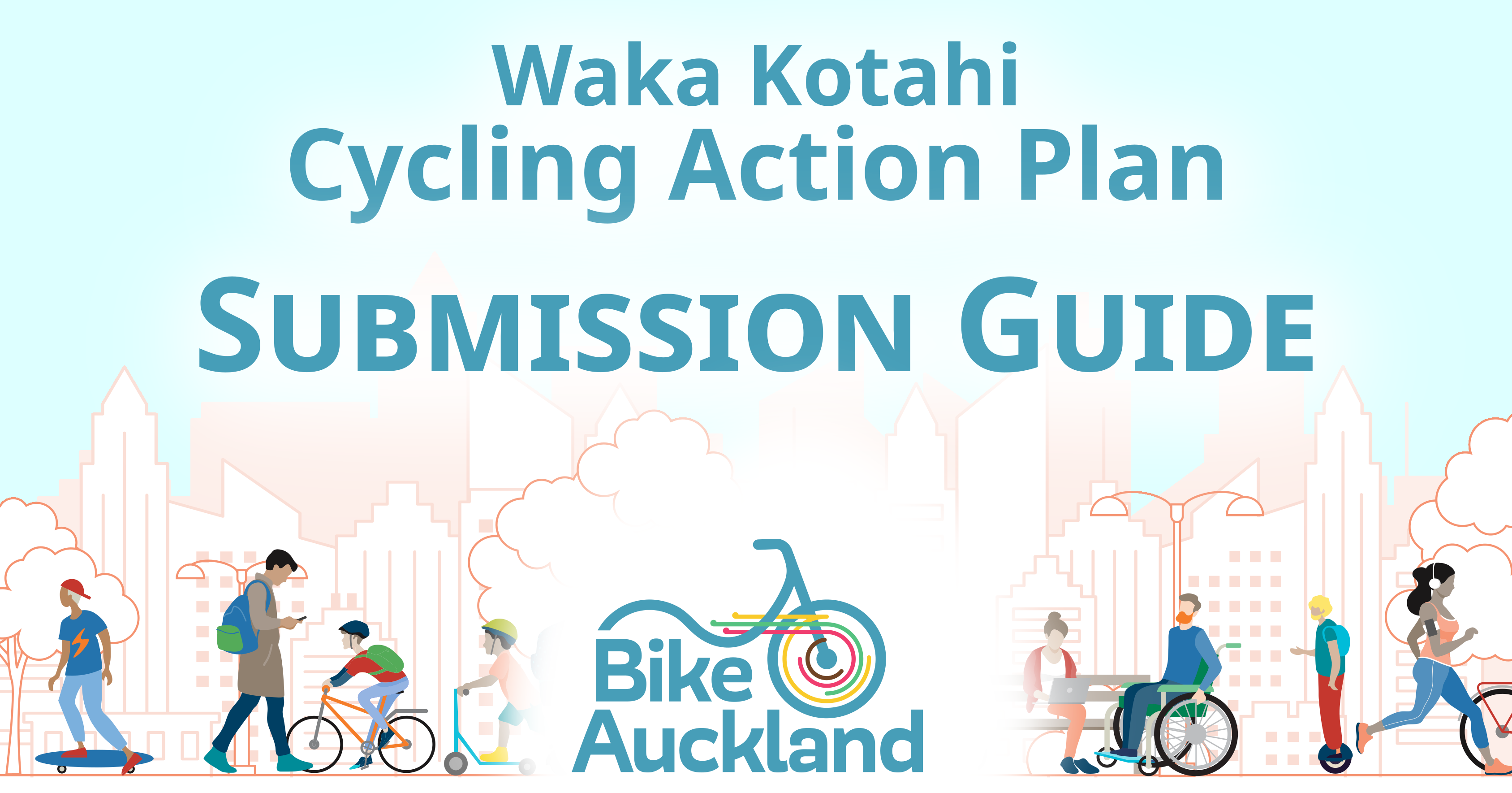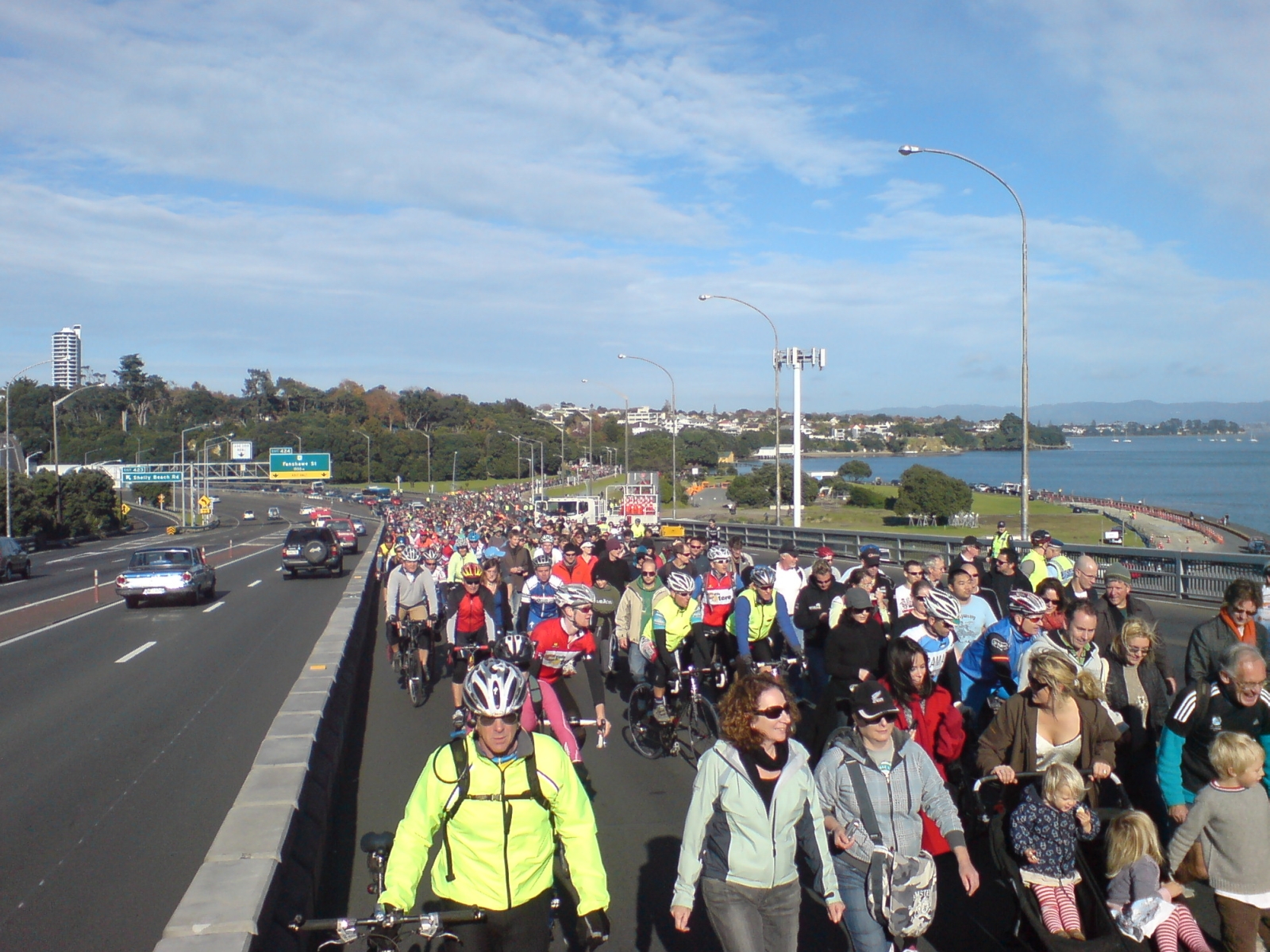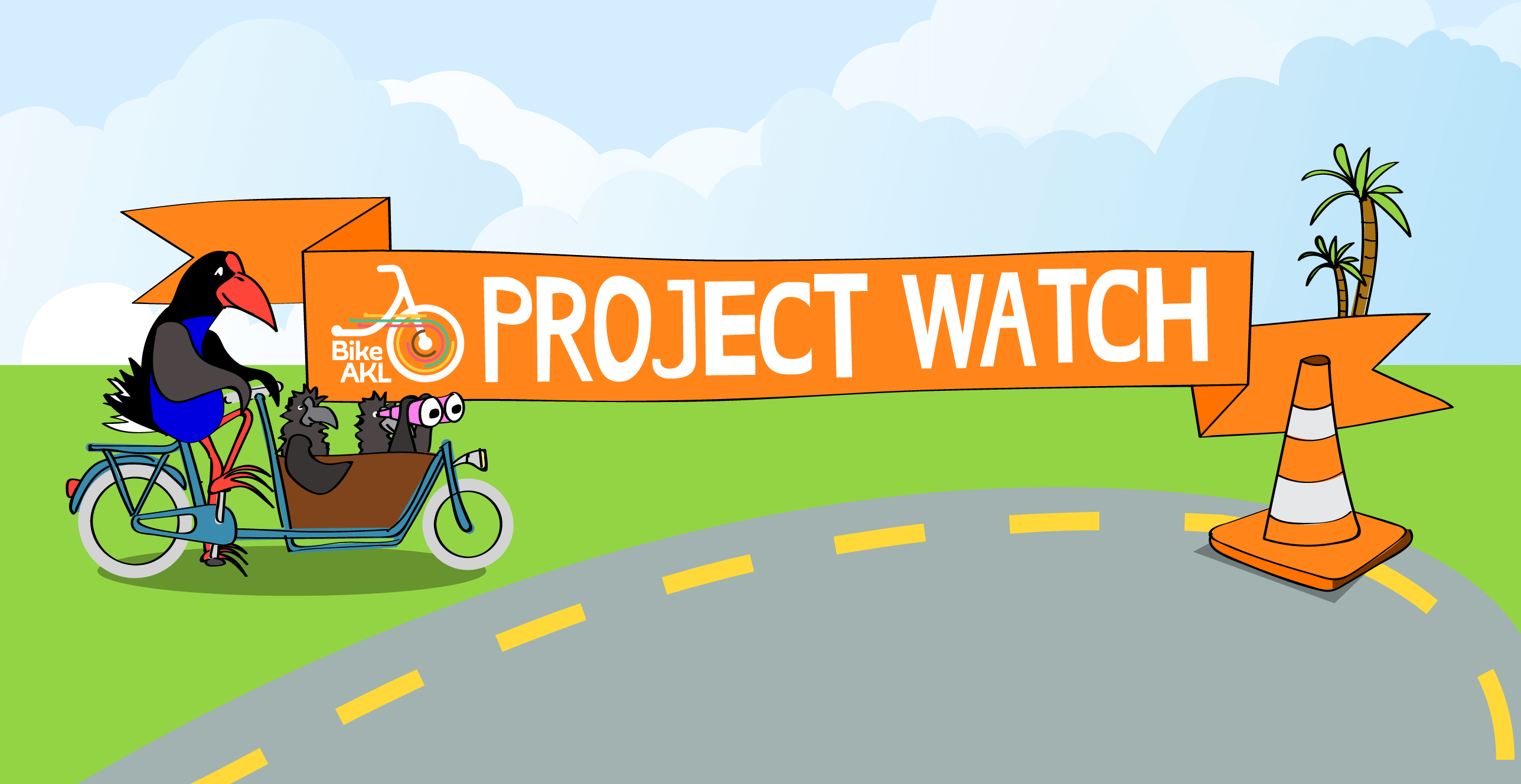When Te Tāruke-ā-Tāwhiri (Auckland’s Climate Plan) and the Transport Emissions Reduction Pathway were given the tick by Auckland Council we felt victorious and excited to see what would come from them. These were plans which had ambitious targets for more people riding bikes instead of driving, and which consistently mentioned providing safe cycleways as a key way to get there. But, somehow, even with a commitment to zero deaths and serious injuries by 2050 (Vision Zero), we continued to see the same roadblocks, the same story of safe cycleways being put on hold or scrapped, the same prioritisation of car parks over lives, leaving Tāmaki Makaurau Auckland way behind on meeting those targets. So, what’s the problem? Some say it’s the system itself, others say it’s top executives in Auckland Transport dubbed “the layer of clay,” and an unhealthy organisational culture.
The Waka Kotahi Cycling Action Plan seeks to address some of the issues which have been barriers to cycleway delivery across Aotearoa. It states that “at the current rate of delivery, it will be over 150 years before [cycle] networks are sufficiently connected for people to get where they need to go.” Will this plan succeed in bringing about the transformation of our transport systems that we have been waiting so long to see? We hope so!
Fill in this survey by Friday 26 May, 5.30pm.
The Cycling Action Plan
The Cycling Action Plan’s vision is that “in ten years, people of all ages and abilities will be able to get to where they need to go using connected networks of safe and attractive cycleways and quiet streets.”

The plan was created with the aim of reducing barriers to rolling out safe cycle networks across Aotearoa NZ.
It states that Waka Kotahi will take a more active role in cycleway delivery by partnering with Councils to create cycleway networks, and taking leadership to reduce public pressure on local agencies. And it will drive internal changes within Waka Kotahi to remove barriers for Councils to deliver cycleways. These are important because “96% of council stakeholders believe a significant change in cycling is possible, but only with a bold shift in policy and approach.” Through discussion with key stakeholders Waka Kotahi have identified these changes for providing significant change in cycling.
The Cycling Action Plan also sets out the reasons for investing in and encouraging cycling; from emissions reduction to greater accessibility for disabled people. We love this, and, if you have the time (and brain power), it’s worth a read over these pages.

You’ll see some examples and case studies which Bike Auckland contributed to such as Te Ara i Whiti (lightpath), Project Wave, and bike registration programme 529 Garage!


In the image below the “successful trial in Auckland and Christchurch” refers to 529 Garage! This bike registration and recovery platform has proven to be effective overseas so Bike Auckland and Christchurch City Council brought it over to to Aotearoa. We put in a lot of effort and volunteer time to grow awareness about 529 Garage and get bikes registered! It’s great to see Waka Kotahi taking bike theft and bike recovery seriously.

It also features a case study on an e-bike trial which one of our oldest bike burbs, Triple Teez, is involved with!

Policy Context for the Cycling Action Plan
- Driven largely by the National Vehicle Kilometres Travelled Reduction Plan and the Government Policy Statement on Transport, as well as the 2022 Emissions Reduction Plan
- Sits within the Waka Kotahi 30 year plan,
- Will support and feed into regional Land Transport Plans, Long term community plans, and Vehicle Kilometres Travelled Reduction Plans
- Sits alongside a walking plan which is concurrently being developed
- Sits alongside and supports the Reshaping Streets and Accessible Streets proposals (both of which are pending Central Government approval)
- Will have an influence on the content of the expanded National Cycling Plan (set to be released by the end of 2023)
The details
The plan focuses on four key pillars with key actions attached to them;
Planning connected networks
- A vision “to support the completion of connected [cycleway] networks in all main urban centres within 10 years.” This is very close to lining up with the Climate Commission’s draft advice (also open for submission now) that “for major population centres, the Government should also complete cycleway networks by 2030,
- A shift towards network focused cycleway planning (such as around schools, public transport, and community hubs),
- Ensuring new development is supported by cycleways and cycle facilities,
- Updating guidance so that cycleways are designed for all ages and abilities (including the various types of bikes used predominantly by the disability community)
Streamlining our funding system
- Making funding processes for cycleway projects easier for transport authorities,
- Creating a 10 year investment plan,
- Using timeframes and redistributing funding if it isn’t spent (watch out Auckland Transport!),
- Harnessing road renewals as an opportunity to provide improved safety for walking and cycling
Delivering change on the ground
- Support for area-wide safer speeds,
- Prioritising projects that are ready to go and easy to deliver
- Making it easier to reallocate road space to create safer streets,
- Making it easier for Councils to do trials for transport projects,
- Coordinating a “community of practice” which would build capacity through sharing case studies and learnings,
- Supporting innovation for cycling and micromobility, such as through Hoe ki angitū, The Innovation Fund
Putting people at the heart of change
- A Māori-centred approach to cycling,
- Funding the expansion of a community run bike recovery service… sounds like 529 Garage to us!
- “Narrative for Change” Waka Kotahi will provide communication to help people understand why cycleways are important and bring them on the journey,
- Trials of targeted E-bike libraries and subsidies in some locations,
- Investing in first and last mile solutions such as secure bike parking, and shared e-scooters. This one includes a special mention of e-cargo bikes for freight!
Feedback on this plan will influence the expanded National Cycling Plan which is due for release at the end of the year; so we encourage you to fill in the survey and have your voice heard.
How to submit
You can make your submission by filling in the survey found on this page. The survey is geared towards stakeholders and asks towards the end which type of organisation you represent. So, if there is a particular organisation who you could be giving feedback on behalf of, ask their permission to represent them on this plan.
Fill in this survey by Friday 26 May, 5.30pm.
While we recommend you respond in your own words, we’ve provided some prompts here to help get you started.
The Short Version
Overall we think this plan is great! For a quick submission all you really need to say is “All of this is great!” and “Please get on with it!” In the section where they ask if anything in the plan should be changed we suggest including;
Deliver cycle networks in major population centres by 2030
Accelerate the delivery of cycle networks in major population centres (eg. Auckland, Christchurch, Wellington) so they are complete by 2030 (instead of 2033) to align with the Climate Commission draft advice that “for major population centres, the Government should also complete cycleway networks by 2030.”
The Long Version
The Cycling Action Plan gets our stamp of approval, and we want them to add in a few extra points. One of the last survey questions gives you an opportunity to add in things which they may have missed. Have a look at this list and add anything that you agree is important too!
Deliver cycle networks in major population centres by 2030
Accelerate the delivery of cycle networks in major population centres (eg. Auckland, Christchurch, Wellington) so they are complete by 2030 to align with the Climate Commission draft advice that “for major population centres, the Government should also complete cycleway networks by 2030.”
Ensure an immediate response when there is a death or serious injury on the road
Overseas when a pedestrian or cyclist dies on the road it is instantly closed while they assess what happened. Once they figure out how to make it safe they implement those solutions straight away. This is what we need to do in Aotearoa too. It should be mandatory for Councils to close the road to cars or reduce the speed limit significantly and put in a pop up cycleway when there is a death or serious injury on the road. Once the agencies know what caused it they should implement solutions to improve safety immediately. Currently we spend years waiting – and then sometimes nothing (or very little) happens to improve the area’s safety. This wait time creates a high risk that other people will get hurt and is anathema to Vision Zero.
Share the Road workshops should be mandatory training for all truck drivers
Share the Road workshops are a fantastic course Cycle Action Network runs (with funding from Waka Kotahi) to educate truck drivers on driving safely around people who are riding bikes. At the moment it’s opt in but it should be mandatory so that everyone can stay safe.This is helpful for the drivers too; they don’t want the trauma of killing someone! To make sure there is capacity for this to reach all drivers Waka Kotahi should put more investment and resource towards this crucial programme.
Fund community-led behaviour change programmes
Community-led is the most powerful for creating behaviour change because people are more likely to try a bike if they can talk to someone they know about it; eg. their neighbour, a parent at the local school. These natural community connections carry trust which makes people more open minded. Additionally, locals are more likely to understand local issues and culture, so their initiatives are more likely to resonate with their local community. Waka Kotahi and local agencies should invest more funding directly towards community-led modeshift programmes such as our bike burb programme, the initiatives the burbs get up to, and similar community-led initiatives. There would be a great modeshift benefit from funding key people for the time they invest into championing cycling for their area.
Trial providing Cycle Hangars as on street secure bike parking for residents
Cycle Hangars are secure, sheltered bike parking cages which occupy on road car parking spaces. They are especially useful for high density housing which doesn’t have space for safe cycle parking, or which doesn’t provide space for bikes of an array of shapes (eg. cargo bikes, tricycles, reclining trikes). Cycle Hangars have been used successfully overseas to provide safe bike storage in much the same way we currently provide on road car storage.
Make streets outside of schools safe 24/7
Safety improvements around schools, like safer speeds, should be consistent. A permanent speed change is easier to remember and adhere to than one that varies at different times of day. It’s important for safety too – the school community uses the surrounding street at all hours of the day. For example, during the daytime teachers take their classes on walking trips into the neighbourhood, and grandparents help with reading recovery. Outside of school hours children often arrive early and leave late due to rehearsals, performances, sports practice and sports games. The adults and teachers involved in those activities also deserve a safe street which enables them to choose active travel. Our transport agencies need to make sure the streets around schools are safe enough for the whole school community to have the choice to walk and cycle for their transport, which would significantly reduce school congestion.
20% of the total transport budget should be allocated towards active transport
The United Nations Environment Programme recommends at least 20% of the transport budget is invested in active transport non motorised transport like walking, cycling and scooting. The Cycling Action Plan is specifically not a funding plan but it will influence other plans so it’s worth mentioning that we need more investment.
Fill in this survey by Friday 26 May, 5.30pm.
Image attribution: All images in this blog have been lifted from the Waka Kotahi Cycling Action Plan document, and edited in minor ways for greater readability in a blog format, as permitted under the Attribution 4.0 International Creative Commons license.




